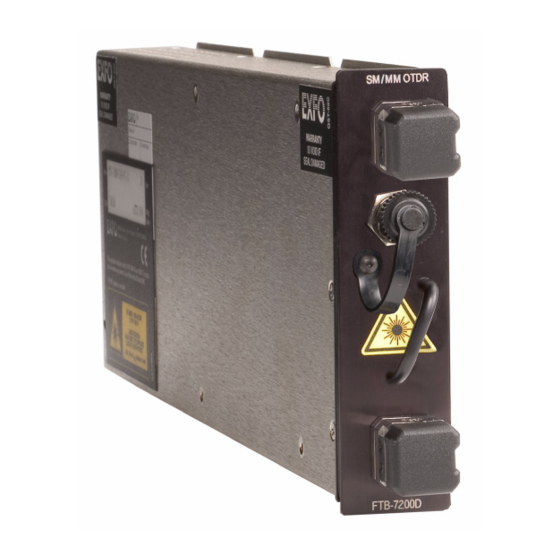
EXFO FTB-7000 Series Manuals
Manuals and User Guides for EXFO FTB-7000 Series. We have 2 EXFO FTB-7000 Series manuals available for free PDF download: User Manual
EXFO FTB-7000 Series User Manual (339 pages)
OTDR for FTB-200 V2
Brand: EXFO
|
Category: Test Equipment
|
Size: 3 MB
Table of Contents
Advertisement
EXFO FTB-7000 Series User Manual (335 pages)
Brand: EXFO
|
Category: Test Equipment
|
Size: 3 MB
Table of Contents
Advertisement

